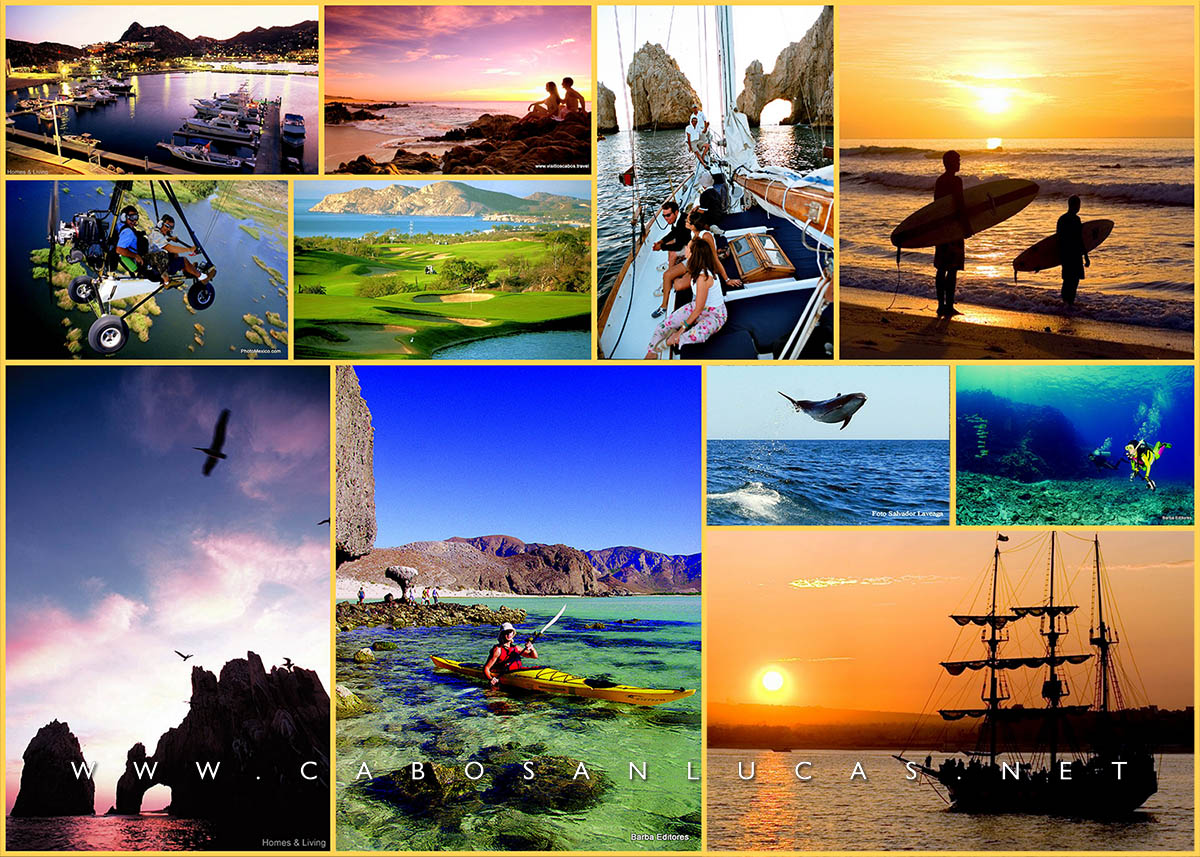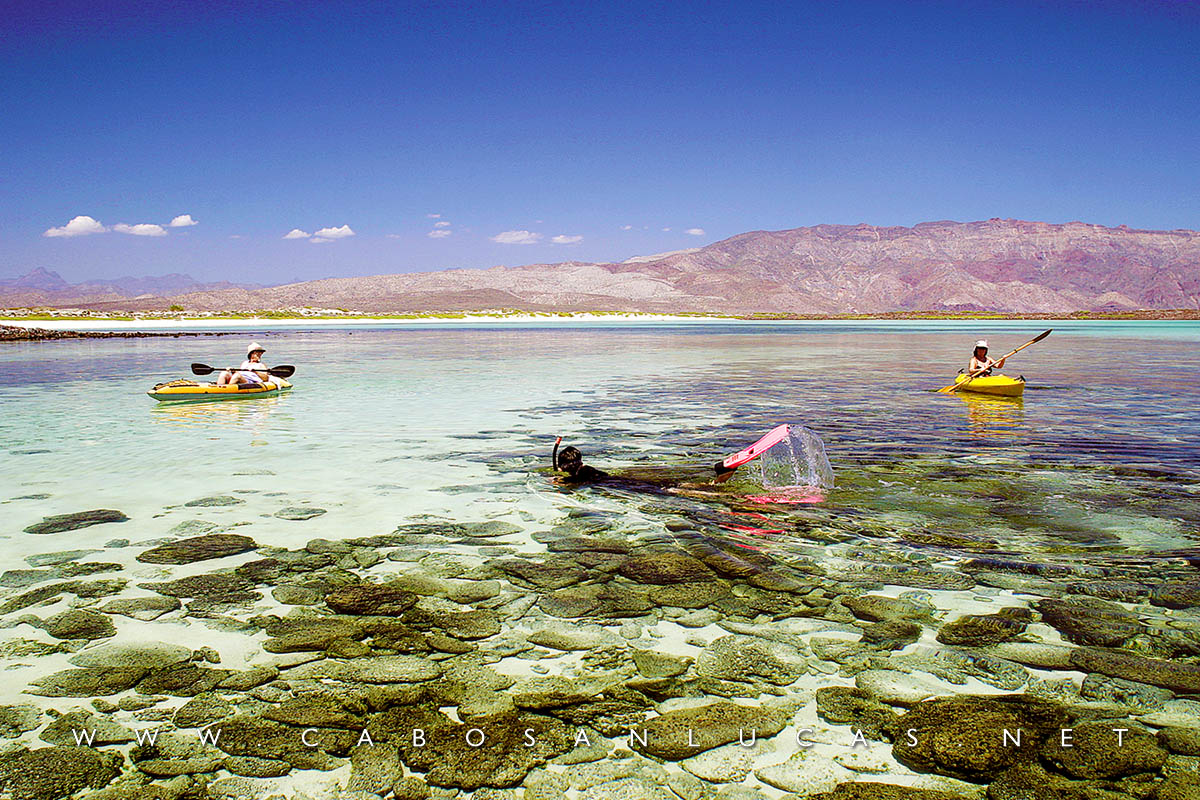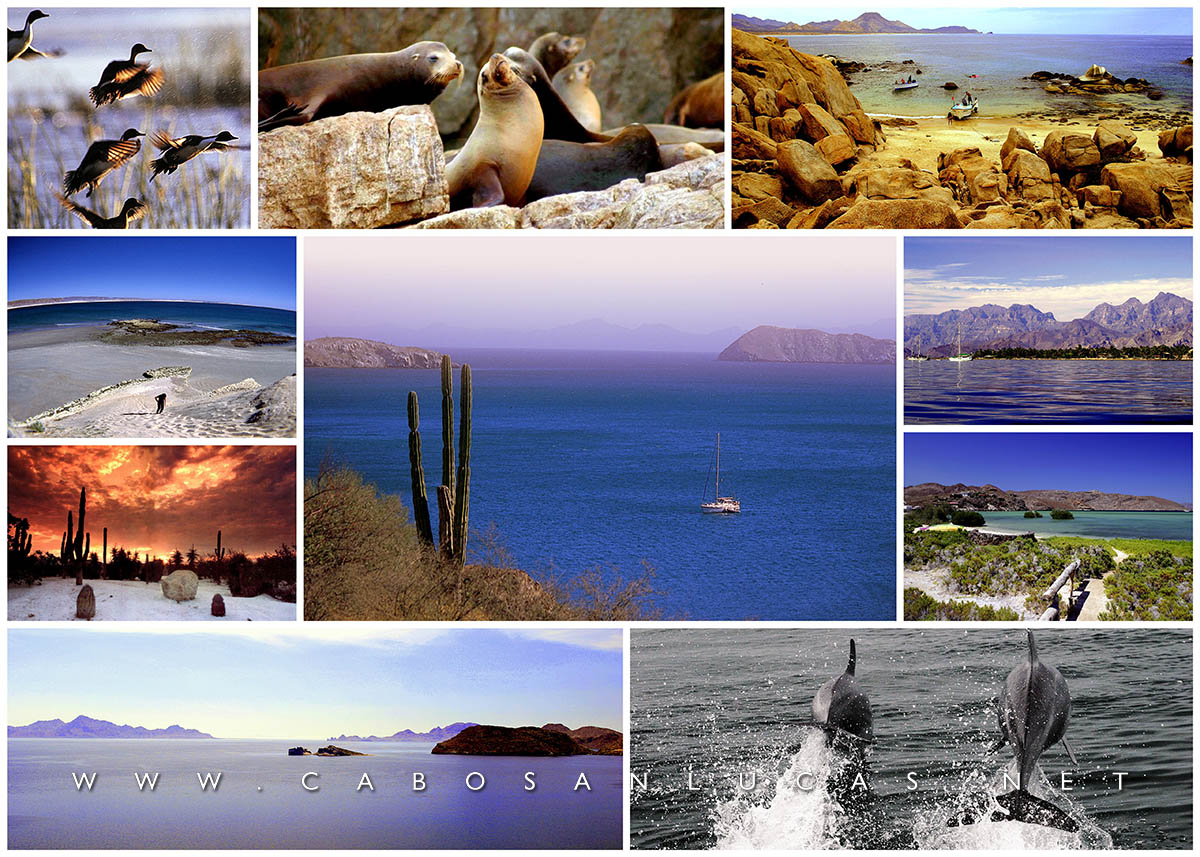The Sea of Cortez is located in Mexico (also known as the Gulf of California) is a sea of striking beauty placed between the Baja California Peninsula and Mexico’s mainland.
The states of Baja California Norte, Baja California Sur, Sonora and Sinaloa all have coasts within this sea. Both Cabo San Lucas, The Corridor and San Jose del Cabo are cities with beaches located in this sea.
The name is in honor of Hernán Cortés, the conqueror of the Aztec Empire, who sent Francisco de Ulloa to map the area and sailed its perimeter between 1539 and 1540.
It was renamed the Gulf of California by the Mexican government.
The Sea of Cortez (Gulf of California) includes 244 islands and oceanic marine zones inscribed as World Heritage sites, it is also home to 891 fish species, 90 of them endemic (ie. only found in the Gulf).
These areas are also home to 39% of all the marine mammal species and 1/3 of the marine cetacean species (Thomson et al. 2000; Brusca 2002 PDF).
Protected areas in the Gulf between Baja California and Sonora in Mexico include:
- Upper Gulf and Colorado River Delta
- Islands of the Gulf
- Isla San Pedro Mártir
- El Vizcaíno Reserve
- Bahía de Loreto National Park
- Cabo Pulmo National Marine Park (site)
- Cabo San Lucas Reserve
- Isla Isabel National Park
- Archipelago de San Lorenzo National Park (site)
The Sea of Cortez has over 300 estuaries and wetlands that are home to a rich community of animal and plant species. They also are very important for the whole marine ecosystem in the Gulf generating a large number of nutrients and providing breeding and growth areas for innumerable living organisms.
It is also considered one of the seas with the highest biodiversity on the planet, and is, for example, home to more than 5,000 species of macro-invertebrates, it is also a bird watcher’s paradise and an important area for both bird migration, breeding and refuge.
The Sea of Cortez has been described as “ferocious with life” by John Steinbeck and as “the aquarium of the world” by Jacques-Yves Cousteau. They both make it crystal clear just how diverse life is in the area. Emphasizing this importance, UNESCO declared it a World Heritage Site and Biosphere Reserve. It is one of the most biologically diverse marine environments in the World, and they state: “The Sea of Cortez and its islands have been called a natural laboratory for the investigation of speciation”. Reference.
Data for the Sea of Cortez:
- 1,126 km (700 miles) long
- 48–241 km (30–150 miles) wide
- Its area is 177,000 km2 (68,000 sq mi)
- Mean depth of 818.08 m (2,684.0 ft)
- Volume of 145,000 km3 (35,000 cubic mi). Wikipedia
- Age: 4.5 million years.
The region’s clear, quiet water, its lagoons and wetlands, ecological and marine reserves and desert landscapes all framed by the Sea of Cortez, are only a few of the marvellous features of this distant paradise.
The Sea of Cortez is now an established route for different cruise ship lines and ecotourism tours seeking new destinations to offer their passengers.
Major cruise lines have discovered that the Sea of Cortez offers a diversity of natural wonders for all passengers to enjoy, and the ports along the way provide all the services that a cruise ship requires when anchored. Read more on the cruise lines that arrive in Cabo San Lucas.
Among the main ports of call for cruise ships in the Sea of Cortez are La Paz, Loreto, Santa Rosalía and Cabo San Lucas.
View Sea of Cortez in a larger map
Baja California Sur has been transformed into a highly attractive tourist destination for both Mexican and international travelers. Its natural beauty and untouched scenery set it apart from other destinations along the Mexican Riviera.
In addition to the natural beauty that passengers can enjoy from the ship deck, when they step ashore they can enjoy tours offered at each port.
These include guided tours of the city, tours that focus on the history of each harbor, snorkeling tours, tours to the main beaches or to diving destinations for both beginning and experienced divers.
Trips to the missions and islands nearest to each port of call, visits to the ancient rock paintings, whale watching and much more.






Leave A Comment